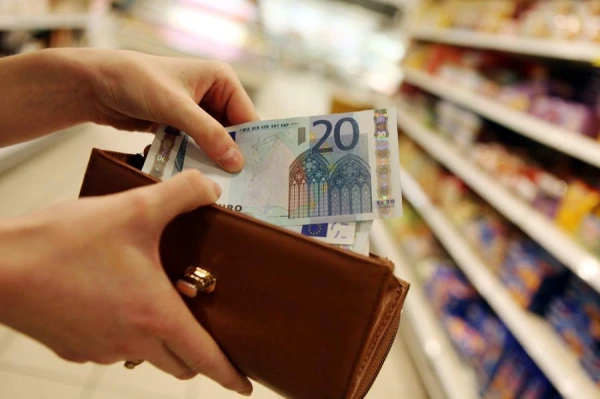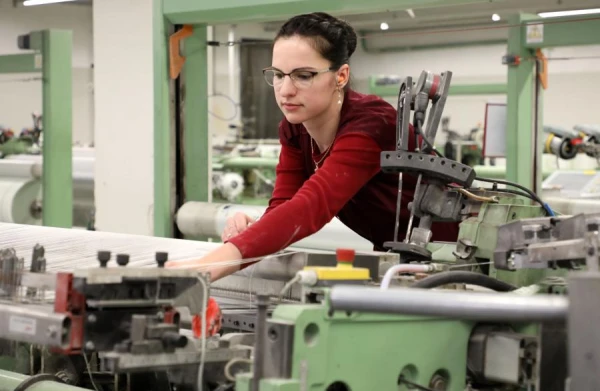
In Latvia, in September of this year, retail trade turnover, according to seasonally adjusted data and in comparable prices, increased by 2.6 percent compared to the same period in 2024.
What Do Local Economists Think About This?
Daina Paula, Economist:
– The food trade is developing more cautiously than the non-food goods segment. There may be several reasons for this, such as the expansion of food trade beyond traditional grocery stores and supermarkets (in certain household and household goods retail outlets) or the increase in orders for ready-made meals.
In the non-food goods segment, positive dynamics in real turnover are observed both in unrelated categories and those related to home improvement and renovation (as indicated, for example, by the trend of increasing housing lending). It is quite possible that the desire to spend more actively rather than continue accumulating savings is related to negative real interest rates on deposits.
A certain role in the revival of retail trade in the third quarter may have been played by the European Basketball Championship held in Latvia, but it is difficult to separate this effect from other factors.
Moreover, data on payments made with cards issued in Latvia show that consumers are gradually becoming more active in making purchases online abroad, which means increased competition for the Latvian retail sector.
Dainis Gashpuitis, Economist
– A slight decline in food trade volumes indicates that the bottom in this segment is not far off. The stabilization of food price growth and a fairly active discount season may gradually return the segment to moderate growth. However, the current level of food prices remains a relevant factor.
Despite the overall uncertainty, the prospects for consumption have become somewhat more optimistic. Conditions for consumption growth are still being formed due to a significant increase in real wages and an improvement in the employment situation, which should contribute to increased confidence.
In recent months, the growth rate of deposit volumes has stabilized, indicating that residents have begun to slow down their savings accumulation and spend more actively, including making decisions about purchasing new housing.
A gradual recovery in retail trade in the third quarter is also observed in other European countries. In September, retail trade in Lithuania increased by 4.1 percent, while in Estonia it grew by 3.7 percent.
Ministry of Economics of Latvia:
– The trade indicators were partially influenced by a low base, as retail trade turnover was low in September 2024. Over the year, the total turnover of retail enterprises in comparable prices increased by 3.5 percent according to unadjusted data and by 2.6 percent according to seasonally adjusted data. In September, compared to August, retail trade turnover decreased by 0.7 percent according to seasonally adjusted data, which was due to a decline in the non-food goods segment. As noted by the ministry, this likely reflects the stabilization of consumption after several months of rapid growth in non-food goods turnover, when residents became more cautious about making large purchases at the beginning of autumn.
The ministry forecasts that in the coming months, retail trade turnover is likely to remain fluctuating; however, the overall trend will still be directed towards moderate growth. The annual increase in September was driven by the growth in sales of non-food goods, to which this month also added an increase in fuel trade turnover. The decline in turnover in the food segment was minor, supported by stable consumption in supermarkets and lower prices for essential goods. Year-on-year, consumption continues to support the growth of purchasing power and improvement in consumer sentiment, but high price levels and caution in spending will remain the main factors limiting faster consumption growth, the ministry notes.
In September, compared to the same month last year, the turnover of retail trade in non-food goods increased by 6.4 percent, with growth observed in almost all major groups of non-food goods. The most noticeable increase was recorded in the trade of watches, jewelry, and other unclassified new goods — by 18.2 percent, as well as in the trade of textiles, carpets, floor coverings, wallpapers, furniture, lighting fixtures, and other household items — by 17.1 percent.
Growth in turnover was also observed in the trade of sports goods and games — by 16 percent, pharmaceuticals and medical goods — by 12.1 percent, flowers, plants, seeds, fertilizers, pet supplies, and feed — by 12 percent, as well as in specialized household electronics stores — by 11.5 percent.













